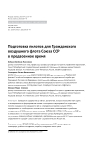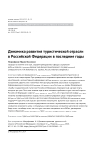Pilot training for the Civil air fleet of the USSR in the pre-war period
DOI: 10.33917/mic-5.118.2024.87-97
The he article provides the contents of archival documents that allow us to judge the timeliness of the formation of plans and specific measures for the training of pilots of the civil air fleet in the pre-war period in early 1941, determining their required number and correlation with aviation schools and training squadrons, and also considers the basic requirements for the selection and training of youth in aviation schools and flight center flight instructors. The documents on the staffing of training squadrons and the distribution of cadets to territorial administrations and cities of the Union of Soviet Socialist Republics are presented.
References:
1. Akmatova A.T. Air transport of Kyrgyzstan / A.T. Akmatova, U.Bakirov. Izvestiya vuzov Kyrgyzstan. 2018;12:84–87.
2. Astrakhantsev O.N. The history of the formation and development of the military aviation personnel training system in Siberia (1910–1991): dissertation… Candidate of Historical Sciences: 07.00.02. Irkutsk State University, Irkutsk, 2019. 638 p.
3. The day before. Collection of ZapOVO documents (39–41). Information portal Milita. URL: https://milita.jofo.me/519813.html
4. Nurpiisova E.M. The history of the formation and development of aviation sports clubs in Eastern Siberia in the XX century: dissertation … Candidate of Historical Sciences: 07.00.02. Irkutsk State University, Irkutsk, 2010. 225 p.
5. Ponomarev N.A. The recruitment system for variable flight personnel of the osoaviakhim aero clubs in the last pre-war years (1939 – June 22, 1941). Historical, philosophical, political and legal sciences, cultural studies and art criticism. Questions of theory and practice. 2012;10–1(24):139–142.
6. Orders of the People’s Commissar of Defense of the USSR. 1941. Information portal «Military law». URL: http://www.voennoepravo.ru/node/2381
7. Russian Archive: The Great Patriotic War: Vol. 13 (2–2). Orders of the People’s Commissar of Defense of the USSR. June 22, 1941–1942. Moscow: TERRA, 1997.
8. From July 1 to August 5, 1941, the evacuation of aircraft factories 380 and 381 from Leningrad to Nizhny Tagil was carried out. Information Portal Textarchive.ru. URL: https://textarchive.ru/c-2034849-pall.html











